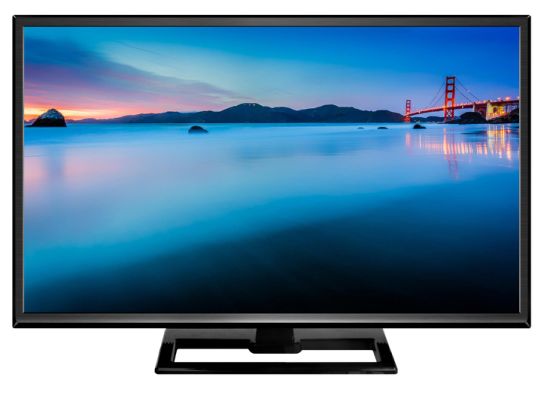LCD vs LED TV: to answer this in the simplest way possible, an LED TV is an LCD TV.
LCD stands for “liquid crystal display” and both LCD TVs and LED TVs have liquid crystal displays.
Both TVs have the same technological background build-up but differ in other areas.
LED TVs can be referred to as a subset of LCD TVs. Here’s why;
The first notable difference is in backlighting. Backlighting is a form of illumination used in LCD TVs.
All LCD TVs do not produce their own light and require a light source to produce an image.
This is what is referred to as backlighting. LED stands for “light-emitting diodes,” and differs from general LCD TVs, in that, LCDs use fluorescent lights while LEDs use those light emitting diodes as light sources.
There are three different forms of illumination that have been used in LCD TVs i.e. CCFL backlighting, full-array LED backlighting and LED edge lighting.
CCFL Backlighting
CCFL backlighting is the older technology that was around for the first batch of LCD TVs.
Here a series of CCFLs sit across the inside of the TV behind the LCD display.
The lights illuminate the crystals fairly evenly, which means all regions of the picture will have similar brightness levels.
This form of backlighting is outdated and has been abandoned by most manufacturers. However, some still use then when producing cheaper versions of the LCD TVs.
Full-array backlighting
Full-array backlighting swaps the outdated CCFLs for LEDs.
An array of LEDs spans the back of the LCD screen; zones of LEDs can be lit or dimmed in a process called local dimming.
Dimming is a feature of LED LCD TVs whereby the LED light source behind the LCD is dimmed and illuminated to match what the picture demands.
LCDs can’t completely prevent light from passing through, though, even during dark scenes, so dimming the light source itself aids in creating deeper blacks and more impressive contrast in the picture.
Must read: How to connect your Android phone to Windows 10
This is accomplished by selectively dimming the LEDs when that particular part of the picture or region is intended to be dark.
One advantage of full-array backlighting is it provides the most accurate local dimming and therefore tends to offer the best contrast.
This is because an array of LEDs spans the entire LCD screen, regions can be dimmed with more finesse than on edge-lit TVs, and brightness tends to be more uniform across the entire screen.
Full-array LED backlighting is contained in high-end LCD TVs because it provides more precise and even illumination which creates better pictures and allows more energy efficiency.
Edge lighting
Another form of LCD screen illumination is LED edge lighting.
Edge lighting is a process by which light from LEDs positioned on the edge or edges of the screen is projected across the back of the LCD screen, as opposed to directly behind it.
Here, LEDs are situated along edges of a screen.
This form is differentiated further having LEDs along the bottom or at the top and bottom, or left and right, or around all the four edges.
These different configurations offer different picture/image quality.
Adding the illumination around the edges allows room for manufacturers to make thinner TVs that cost less to the manufacturer.
This is the advantage edge lighting provides over other forms of backlighting.
In summary, the placement of the lights in LED TVs can differ while lights in LCD TVs are always behind the screen. On an LED TV, the light emitting diodes can be placed either behind the screen or around its edges.
The difference in lights and in lighting placement is one of the reasons why LED TVs can be thinner than LCDs.
Another difference is that LED TVs work with a color wheel or distinct RGB-colored lights (red, green, and blue) to produce more realistic and sharper colors. This allows them to produce a much better quality image then older LCD TVs.
With the stream of benefits that come with LED TVs such as better and clearer pictures, less power consumption, they have become the industry standard today.
LED TVs have a wide range of sizes and weigh less to permit ease of movement.
If you are looking to purchase a TV, an LED TV should be your pick especially those under a budget constraint.
Other improvements to LED TVs do exist in form of OLED TVs and QLED TVs. These costs larger amounts and deliver better pictures.
But LED TVs always get the work done and save you money.
Related:
Videos: Here’s a first look at all three of the new iPhones
The ultimate guide to buying a flat screen TV that suits your room

